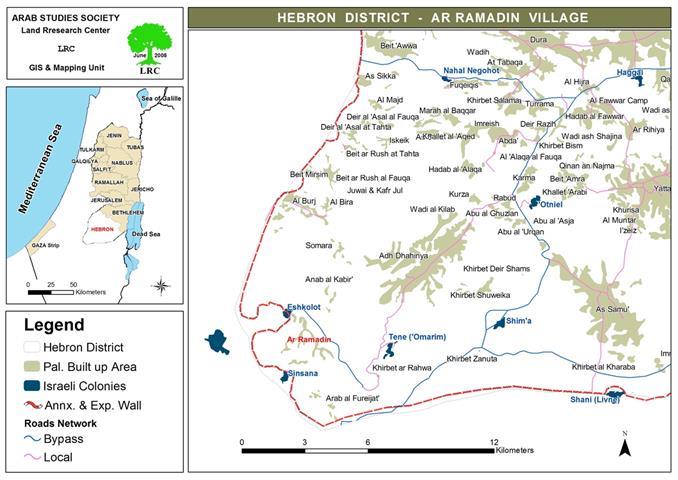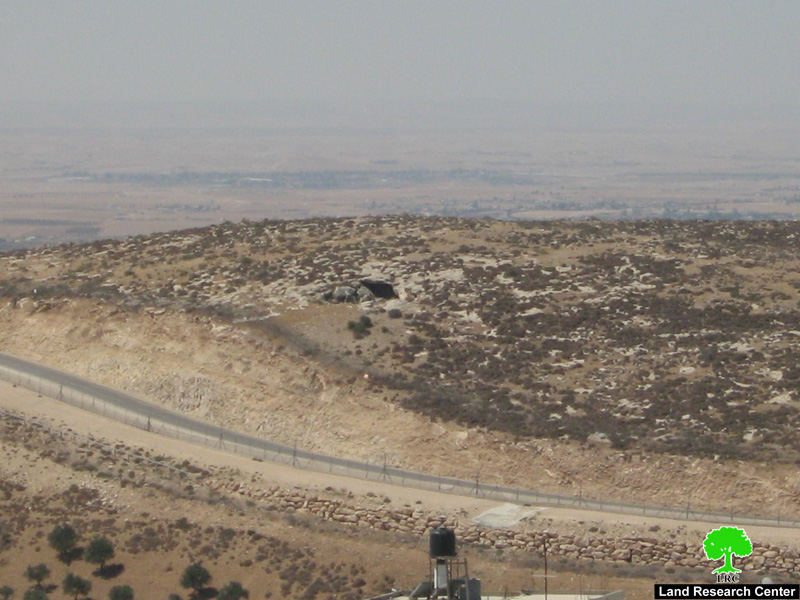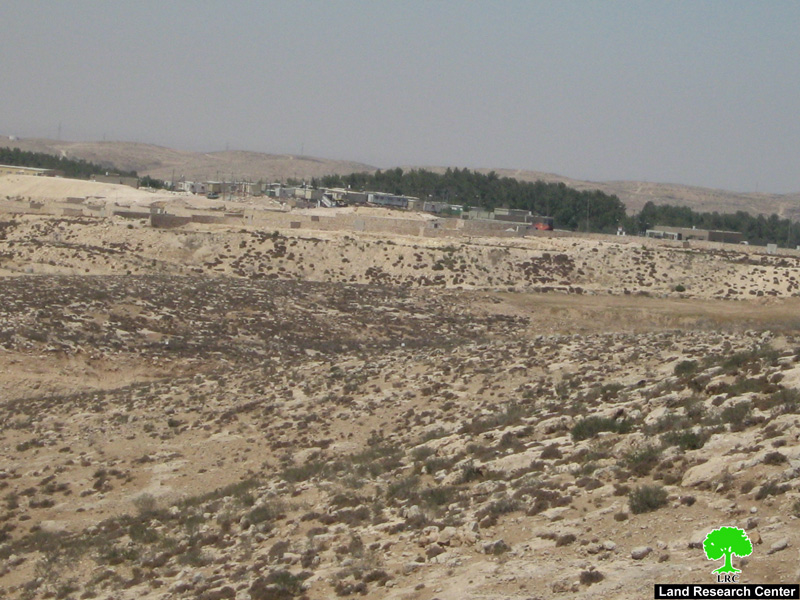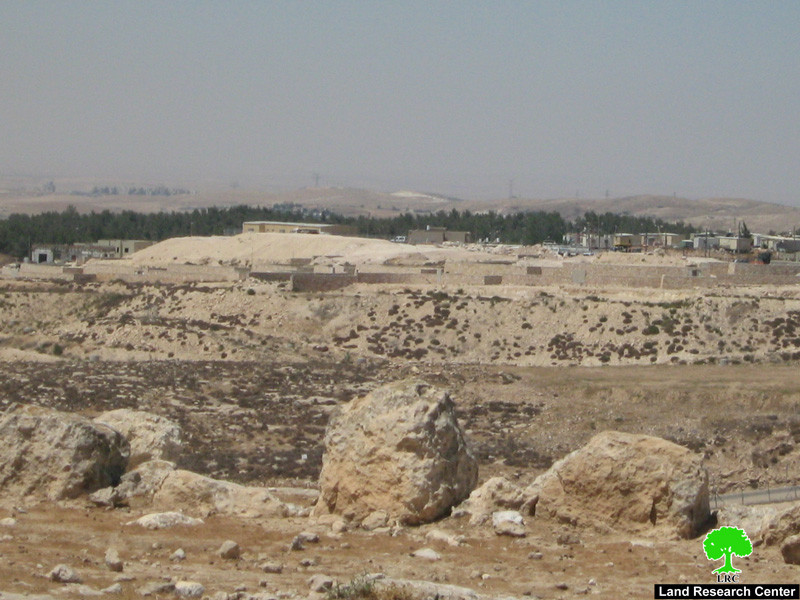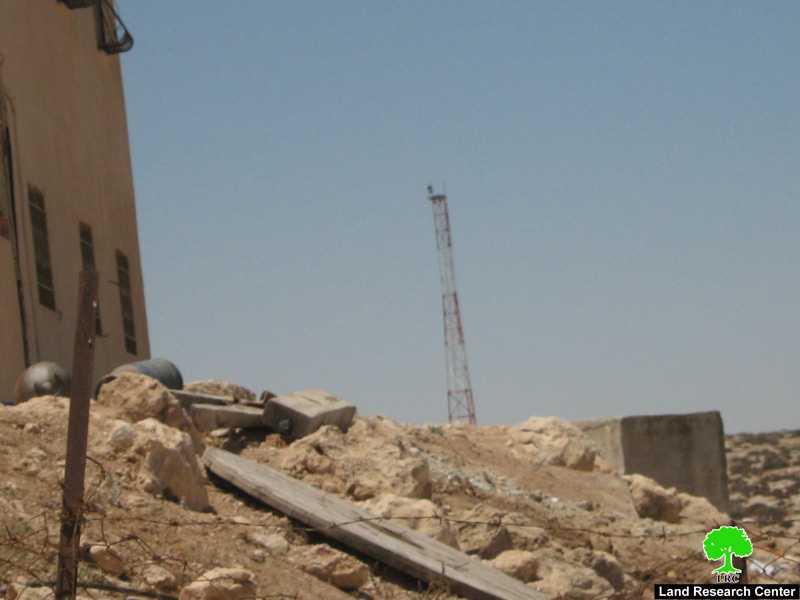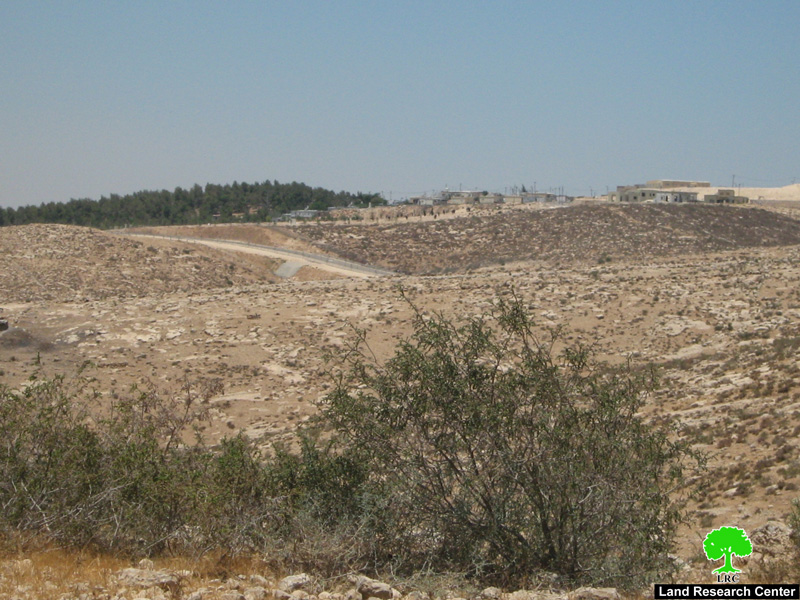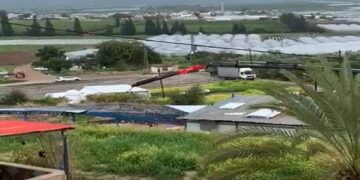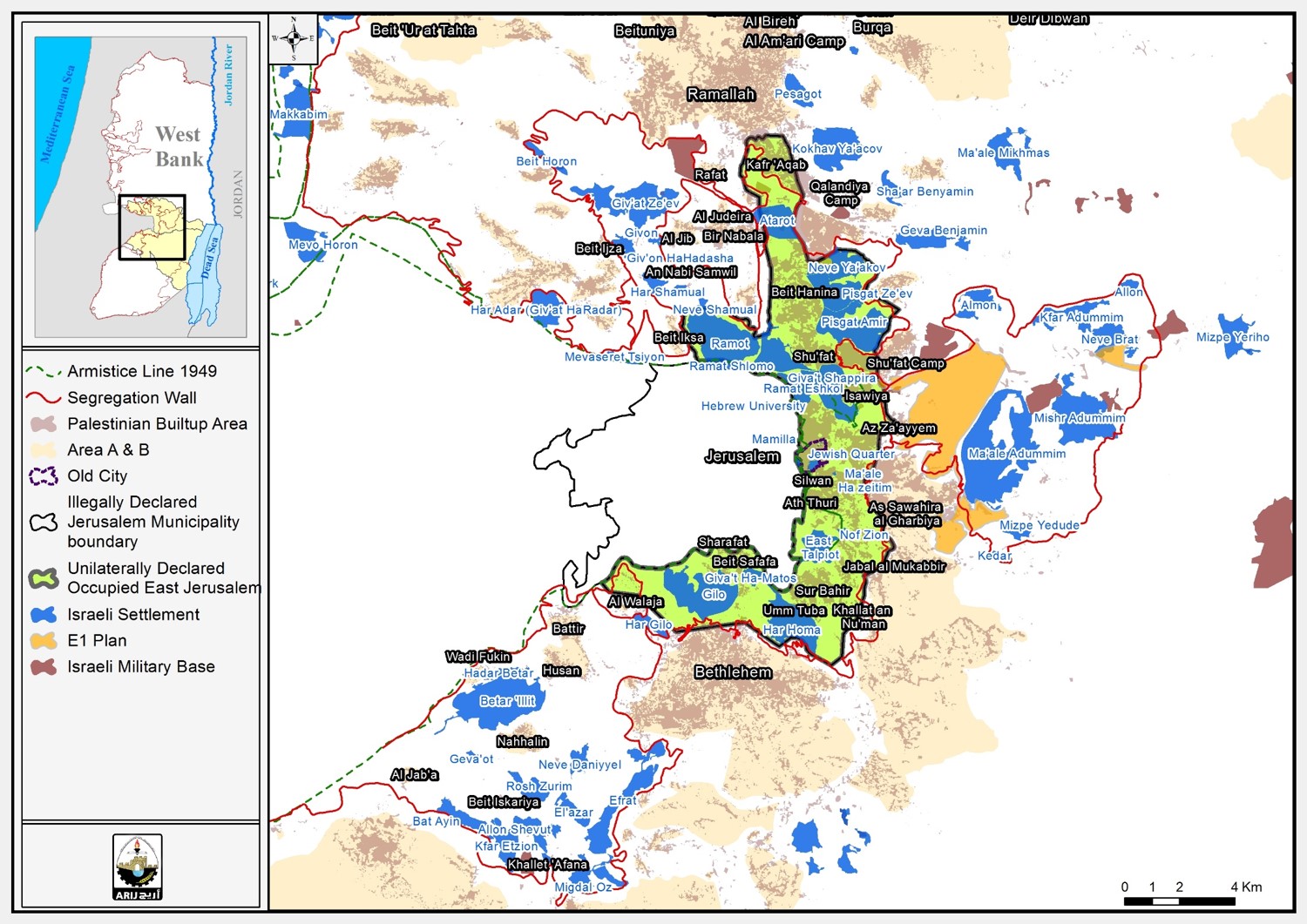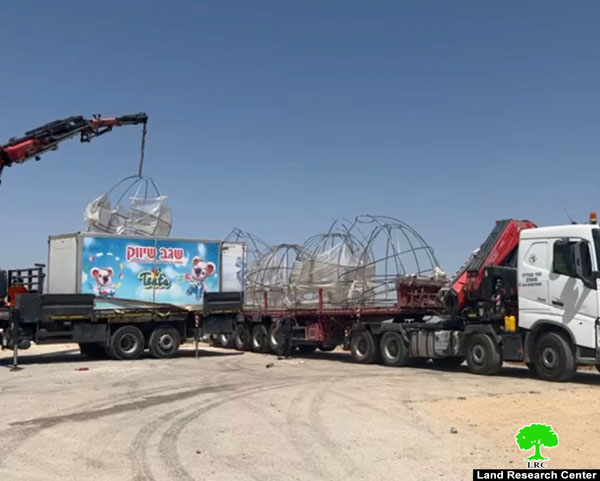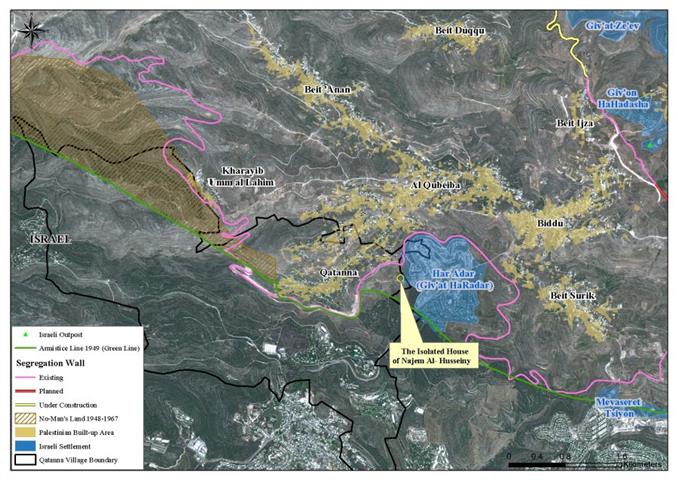The corner stone of Sinsana settlement was placed in 1995 in the form of some mobile caravans to be used by the Israeli occupation forces on lands belonging to Al Sho'our clan in the village of Al Ramadien. The military camp was later transformed to a settlement in 1997. A number of colonial units were also constructed on a 600-dunums land owned by clans living in the village of Al Ramadien.
The confiscated land contains 5 water cisterns in addition to 3 caves used by the Palestinian shepherds as shelters for their sheep. The most famous cave is called “Al Nasrani Cave” which is made holy by Israeli settlers as eye witnesses indicated. Settlers carry out numerous visits to the cave; take pictures of the place as well as carrying out religious ceremonies and practices there. Residents of Al Ramadien consider this cave to be the excuse used by the Israeli occupation authorities to establish a settlement in its vicinity despite the fact that it has no religious or historical value.
Photo 1: Al Nasrani Cave claimed to be holy by the Jews.
The Israeli Segregation Wall in Al Ramadien region has devoured about 500 dunums located in the vicinity of the settlement. About a month ago an increase in the number and movement of construction machinery has been noticed in the newly-confiscated lands. Land leveling has been taking place at an alarming rate in an attempt to add new colonial housing units in a new neighborhood of Sinsana B settlement.
Photos 2, 3 & 4: The continued construction in the settlement of Sinsana
It is worth pointing out that Palestinian land owners did not receive any documents from the Israeli occupation forces informing them of seizing their lands or that it would be used for further enlargement of the settlement.
The confiscated lands belong to the following owners:
-
Ahmad Awad Al Sho’our and his brother Mohammad Awad Al Sho’our. The area of the confiscated land is 150 dunums used primarily for grazing and agricultural purposes. The land contains a water cistern as well as an old cave.
-
Khalil Abdel qader Abu Qa’ood and his cousin Abed Mohammad Abu Qa’ood. The area of the land is 240 dunums used for grazing and agricultural purposes. It has 3 water cisterns in addition Al Nasrani Cave.
-
Hasan Salama Al Sho’our and his brother Musa Salamah Al Sho’our. The area of the land is 30 dunums. It is mostly a mountainous land that is used for grazing as well as agricultural purposes. The land has a water cistern in it.
-
Khalil Abu Dahinin who owns a 10-dunum piece of land.
-
Al Zagharna clan. The 70-dunum piece of land is a hilly one used for grazing and agricultural purposes and it contains a water cistern. The ownership of the land is divided between the following:
-
-
Eid Al Zagharna
-
Salem Salman Al Zagharna
-
Ahmad Suleima Abu Mughnim
-
Ibrahim Salman Al Zagharna
-
Mohammad Salman Al Zagharna
-
According to the villagers, the goal behind the enlargement of the settlement is to transform it into a colonial city in which religious settlers would live. A series of violations have been committed by those settlers including the following:
-
Before the construction of the Israeli Segregation Wall, settlers would chase shepherds who would graze in the lands located in the vicinity of the settlement.
-
At one time, settlers have thrown sound and smoke bombs towards Palestinian shepherds from the Abu Qa’ood family. Shrapnel of these bombs hit a small boy in the eye.
-
After the establishment of the settlement, settlers placed cameras on the high towers located atop of Al Nasrani Cave to facilitate the monitoring process 24 hours a day. Mr. Salman Abu Qa’ood, one of the residents, said that “in case the camera spotted anybody near the Wall, Israeli occupation forces would be summoned to the location immediately and would conduct an investigation-and-search campaign looking for the person who came close to the Wall”.
Photo 5: One of the cameras placed by the settlers at the high towers.
The cameras are preventing shepherds from reaching their lands located west of the village. These lands are considered to be the main source of income and grazing fields for a number of Al Ramadien families.
Mr. Suleiman Abu Qa’ood indicated that during the night, the cameras emit “light beams!!!” and some powerful lights toward the houses of residents which keep them in the range of harmful rays. The houses of Abu Qa’ood family are located 400 meters away from the Wall and the settlement. Israeli occupation forces informed members of the family that they have to stay 150 meters away from the Wall.
Photo 6: Colonial housing units under construction in the settlement of Sinsana.
Prepared by:
The Land Research Center
LRC


